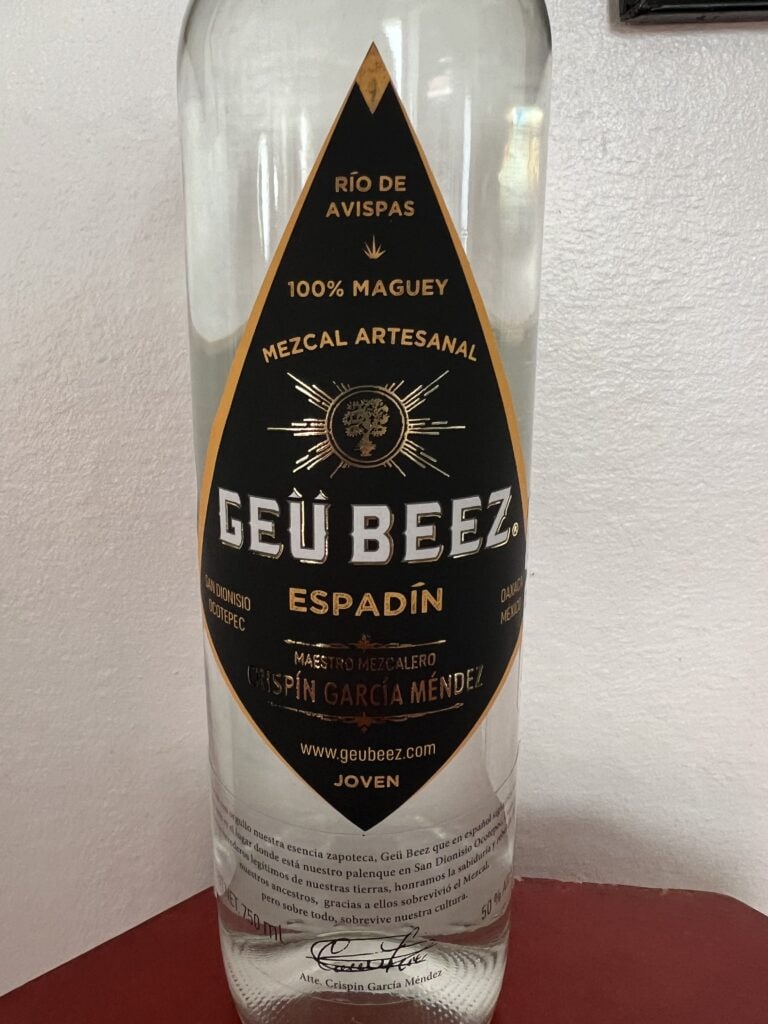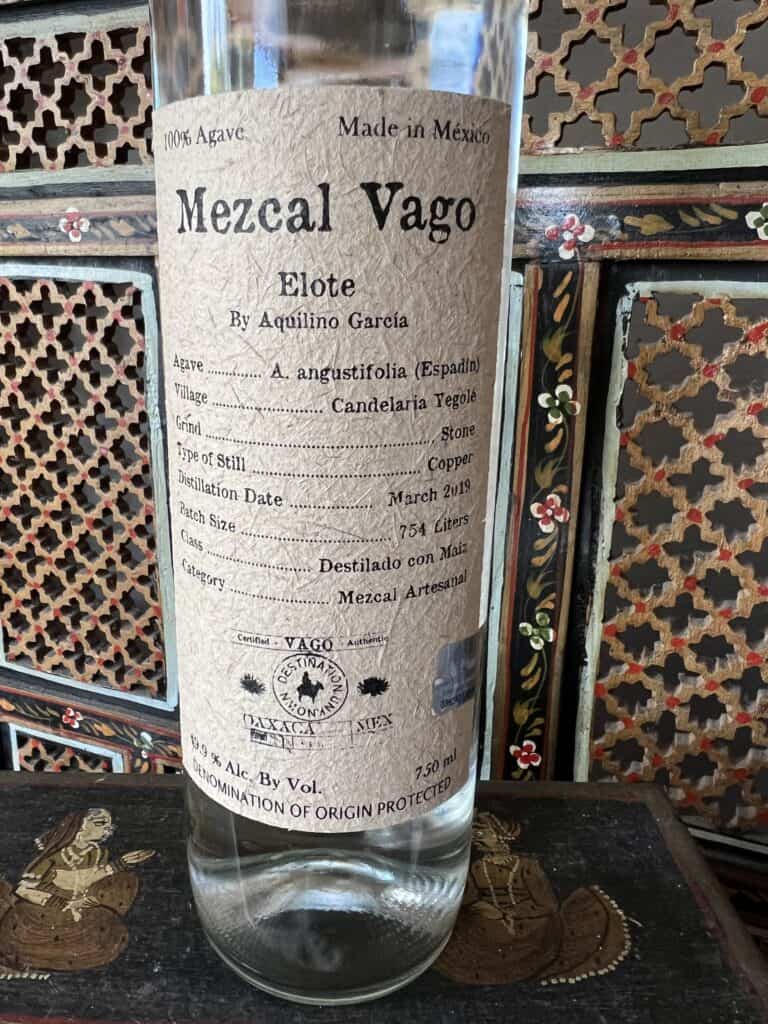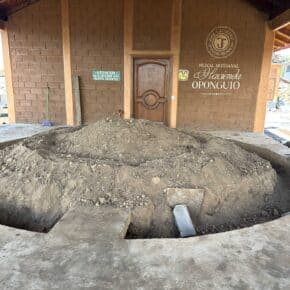How do I find the best mezcal? Which mezcals are sustainably produced? How can I tell if a mezcal is good? Obviously “good mezcal” is an extremely subjective concept, but learning to decode mezcal labels is the first step to buying the mezcal that you are likely to enjoy.
You may already be aware of the basics: the ABV, the categories of mezcal, the classes of mezcal, and some of the types of agave you like best. You may also know that you prefer regional mezcals such as bacanora, that follow their own set of rules. Today we’re mainly covering booze that can legally be labeled mezcal, but I’ll touch upon some of the other types of agave spirits. As we’re aware that many of our readers are quite knowledgeable, this article is organized so that you can easily skip to sections with information that may be new to you. I’ll start with the legal basics.
A bottle of certified mezcal is required to state the following:
- That’s it’s made in Mexico, within the Denomination of Origin (DO)
- The category of mezcal
- The class of mezcal
- The type of agave (maguey)
- The state where the mezcal is produced
- The ABV
- The NOM number
- The lot number
- Tax identification information
I’ll get into detail about the relevant parts of this below. But first…
Why are some mezcal labels so much more informative than others?
Mezcal aficionados tend to value “authenticity,” and many consumers are also concerned about buying an ethical mezcal–finding a brand that could be considered “fair trade.” These consumers are typically willing to read a lot of fine print in the hopes of finding the best mezcal–whatever that may mean to them.
In addition to all the mandatory information, many brands will choose to include additional information on their bottles, ranging from the fairly broad (the name of the maestro who made the mezcal and the village it was made in) to the somewhat specific (the exact type of fermentation vat), to the very specific (the elevation at which it was produced and the name of the stream or river from which the water was sourced).
They may also disclose how old the agave was when it was harvested, if it was fermented with wild yeasts in open vats, how long it was fermented, and the date of production.



All this information can theoretically tell you something about how this mezcal is going to taste, but you need to sample a lot of mezcal before you’re going to be able to predict flavors from the more esoteric points. (Yes, I know that some of you have sampled a lot of mezcal.)
Now for more detail about the basics.
The three categories of mezcal
The mezcal norm allows for three categories: mezcal, artisanal mezcal, and ancestral mezcal. Let’s start at the top.
What is ancestral mezcal?
Mezcal ancestral is often considered the most elite category of certified mezcal. Producers must bake agave in pits and crush it with a mallet or a tahona, also known as a Chilean or Egyptian mill. While the type of oven and milling devices are limited, there’s a lot of options when it comes to fermentation tanks. Ancestral mezcal may be fermented in stone pits, dirt holes, tree trunks, wooden or clay containers, masonry tanks, or animal hides. Agave fiber may be included in the fermentation.
Ancestral mezcal must be distilled in clay pot stills, which may have a clay or wooden montera. Bagazo may be included in distillation.
What is artisanal mezcal?
Artisanal mezcal (mezcal artesanal in Spanish), allows for slightly more leniency in the range of production processes, but it’s still a far cry from industrial. Maguey may be cooked in pit or masonry ovens. It can be milled by ancestral processes or using mechanical shredders.
The fermentation paremters for artisanal and ancestral mezcal are exactly the same. The rules for distilling are a bit more lenient, opening the field to copper alembique (alembic) stills. Pot stills are also acceptable, including stills that have a cap of wood, clay, copper, stainless steel, or an alloy. Bagazo may be included in distillation.
Note: the norm’s wording on distillation for both artisanal and ancestral is somewhat ambiguous, calling for distillation with “direct heat.” Although traditionally stills were wood-fired, some palenques now use natural gas for continuous heat during distillation. Because the mezcal boom has increased demand for wood, this is potentially a more environmentally friendly option.
Note: Some mezcal artesanal may not be taking advantage of category allowances such as masonry ovens and mechanical shredders. For example, a bottle of Rey Campero Tepeztate is classified as “artesanal” because the mezcal is distilled in copper alembic, but the label also tells us that the maguey is cooked in a pit and crushed with a tahona–qualifications for ancestral mezcal.
What is mezcal?
If a modern label doesn’t specify “artisanal” or “ancestral,” it means that the liquid inside falls into the broader category, which allows for industrial processes. A “mezcal” label will often be short on information because industrial methods don’t give you bragging rights. The agave can be cooked in ovens or autoclaves. It can be shredded by basically any process, including a diffuser (difusor, in Spanish). It can be fermented in wood, stainless steel, or masonry, and distilled in basically any kind of still.
Note: Some producers are not certified as artisanal or ancestral, but may note on their label if they are using, say, a copper alembic still instead of a more industrial model of still.
What are the classes of mezcal?
Certified mezcal from the DO has six official classes.
Four of the classes let you know if and how long the mezcal has been aged: blanco or joven; reposado; añejo; and madurado en vidrio, which means rested in glass, and is widely considered a more “traditional” way to mellow mezcal than resting it in wood.
(The bacanora norm and the proposed raicilla norm vary somewhat in the rules of classification. You can read about that in our mezcal encyclopedia entries on blanco, reposado, and añejo.)
The other two classes are a bit more complicated. A mezcal label that says “destilado con” or “distilled with,” indicates that additional ingredients were added during distilling. So, in other words, a pechuga. Pechugas can incorporate everything from the classic chicken breast to a range of meats, insects, and fruits.
A mezcal listed as “abocado con”means that it has been infused with other ingredients after distilling. As examples, the norm lists gusano de maguey, damiana, lime, orange, and mango.
NOM-070 does not require labels to give any details about how long a reposado or Añejo has been aged. However, mezcal that has been rested in glass will say for how long.
Other information required by the NOM:
Agave:
A mezcal label will tell you that it’s 100% agave (or 100% maguey), and must list the scientific name or common name of the agaves used in production. In the case of ensambles, the predominant agave will be listed first, followed by other agaves in descending order of volume.
State:
A label will denote the Mexican state where the mezcal was produced. A bottle with the word mezcal on the label may legally be produced in Oaxaca, Guerrero, San Luis Potosí, Zacatecas, Durango, and parts of Guanajuato, Tamaulipas, Michoacán, Puebla, and, most recently, Sinaloa. Because terroir is so important to mezcal, the state of origin can often add to your understanding of the bottle in your hands. (And of course it’s even more useful when the brand includes the exact area.)
How strong is mezcal?
Commercial mezcals are required to list the ABV, which must be between 35% and 55%. An ABV will tell you a fair amount about how that first sip of mezcal is going to hit you. Some aficionados claim that a mezcal should have an ABV of 45% to be considered mezcal at all and emphasize that higher ABV mezcals have more complex, concentrated flavors. But ABV preferences tend to vary somewhat by region and ABV allowances vary depending on the type of mezcal. (Commercial bacanora must legally be at least 38% ABV.)
Why don’t I see the word mezcal on the label at all?
An additional note on nomenclature: If you don’t see the word mezcal, tequila, bacanora, or raicilla on a bottle of agave spirits, it’s likely because the brand has opted out of the DO and categorization system. If that’s the case, the bottle will be labeled as a destilado de agave, or agave distillate. A destilado de agave could be made within the mezcal DO. It could (as in the case of Caballito Cerrero) be a tequila made by more traditional methods. Or it could be a raicilla, bacanora or other regional mezcal made outside the mezcal DO, but potentially within another DO and set of rules that the brand is opting out of. If this doesn’t make sense to you, don’t feel bad. But if you’re trying to find the best mezcal, you’ll want to keep an open mind to brands that no longer call themselves mezcal–or never did.
So how do you know if your “agave spirit” is a tequila or a Oaxacan mezcal? Again, it all comes down to the label. Most “generic” agave spirits sold on international markets will include a lot of information to let consumers know that they are just as “artisanal” or “ancestral” as their neighbors on the liquor store shelf. The brands will also give you clear clues to what category they would belong to if they chose to accept the current system. For example, a bottle of La Venenosa Tabernas, which is labeled as a “spirit distilled from agave,” has taberna right there in the title – and even has a picture of a raicilla taberna on the front label. (A taberna is the word for distillery in raicilla country.) The back label tells us the spirit is from the Sierra Occidental of Jalisco, a region known for raicilla production. Even Doctor Watson could deduce that this is really a raicilla.
Why would a company choose to be labeled as an agave spirit? Read all about it.
A further note on sustainable mezcal
At this point, so much has been made of the environmental problems caused by the mezcal boom and the exploitation of small producers, that most brands are keen to prove they are making sustainable mezcal – both environmentally and ethically. Unfortunately, they can say whatever they want. It requires more than just looking at a brand’s website to know if they are serious about reforestation or if their producers are getting fair prices. Fortunately, you have some other resources. At Mezcalistas, we attempt to provide serious research and on-the-ground coverage of the producers and brands who are going the extra mile for true sustainability. For example, check out Anna Bruce’s article on Geü Beez or my own article on Chacolo.












Leave a Comment